The Article
YAMAHA’S WXC-50 & WXA-50: AMPLIFIERS…From Any Angle
27th November 2016
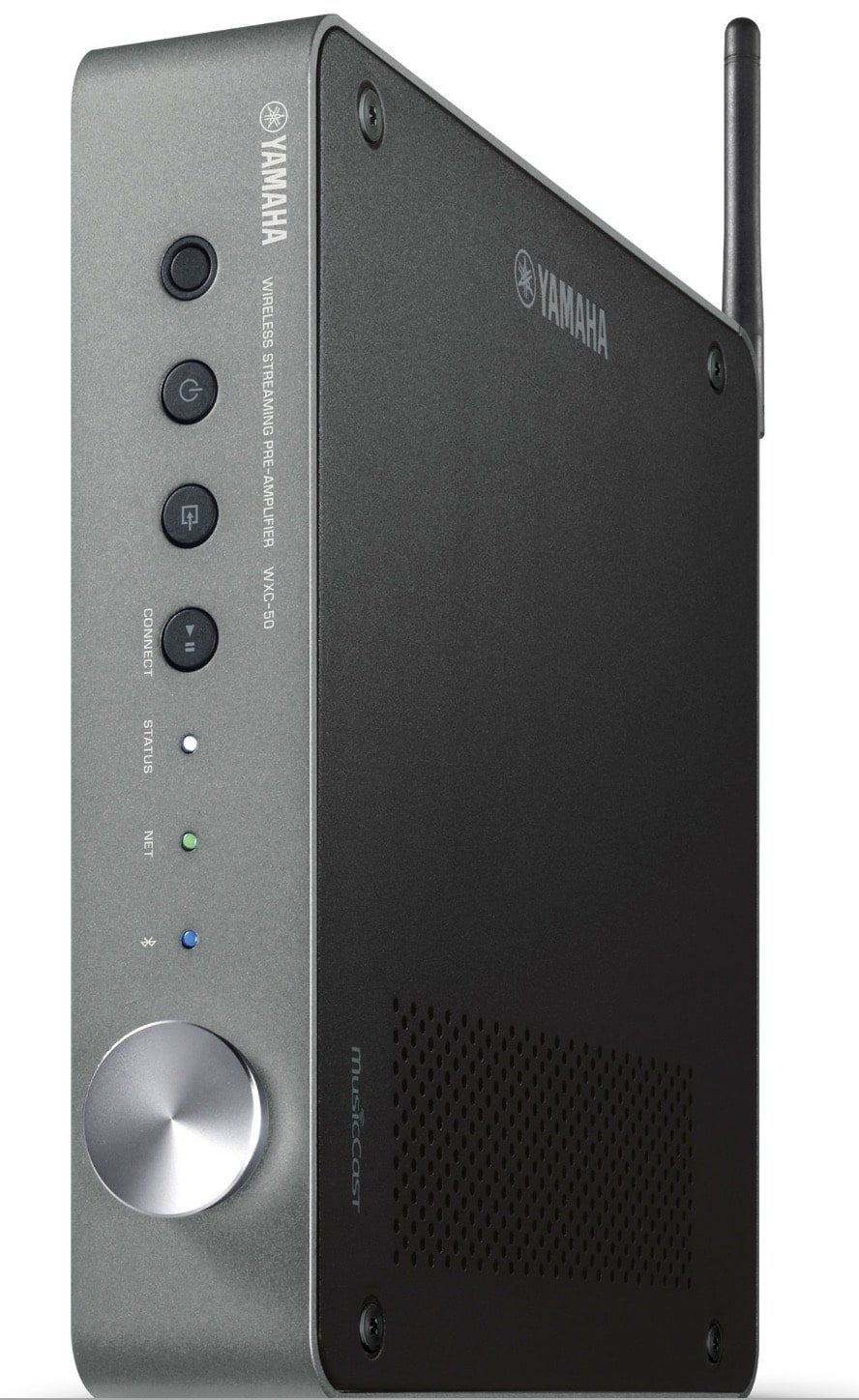
A pair of rinky, dinky amplifiers from Yamaha offer just enough facilities for a small footprint chassis, including MusicCast. Paul Rigby reviews the WXC-50 pre-amplifier and the WXA-50 integrated amplifier
Both of these amplifiers arrive in an almost identical chassis, giving the pair a distinct ‘family’ resemblance that will allow both to easily fit into a living room environment. Both arrive with MusicCast Wi-Fi streaming as standard and come with a 48bit digital volume control. Both can also be mounted vertically to further minimise the overall footprint. They also support AirPlay and, where available, Spotify, Napster, Sirius XM, Juke and Pandora as well as DSD 5.6MHz and FLAC/WAV/ AIFF 24bit/192kHz. Finally, they both span 215 x 51.5 x 245.9mm.
The first of the two amp boxes, the WXC-50 pre-amplifier. You can also turn off the Pre-amp mode and use the device as a simple network audio player. This box weighs 1.44kg. The 70W WXA-50 weighs in at 1.94kg. Check out the accompanying images to see a rundown of controls, sockets et al. The aerial is the home of the screw-in, multi-position, Wi-Fi aerial.
IN USE
To play the USB stick of digital files, I decided to download and install the associated and in-house developed MusicCast app on my iPhone 6S. USB file control was a lot friendlier via the app than punching buttons on a chassis and hoping for the best. Download and software installation was easy but the final set-up was overly difficult. It took me around 20 minutes when it really should have taken me, what, three?
MusicCast is not a Bluetooth system but utilises a Wi-Fi connection. To install it, you press the Connect button on the front of either chassis for five seconds until the adjacent connection light flashes. Then you open the app itself and follow the onscreen prompts which involves bouncing between it and the phone’s Wi-Fi Settings screen. In that Settings screen, you wait for the MusicCast option to appear as one of the choices within the available local Wi-Fi connections list. Well it did, eventually. Nothing was seen until my third try but I finally connected without a problem once it made an appearance.
Back to the app but my trial was not yet over. The app failed to complete the install sequence another three times but I got there at the fourth attempt. Why these issues occurred can only be conjecture. Was it down to my phone? Was it Yamaha’s fault? Was it something to do with my Wi-Fi signal? Was it something else? I can only say that no other, non-Yamaha, device had issues in my listening room or anywhere else in the building at this time.
Nevertheless, once connected and installed, the app worked flawlessly. It showed the song title, sleeve art (not for WAV rips though), CD-type music controls plus EQ controls. My only gripe is that I would have like to have seen a report on the quality of the file type being played. For example, when playing the jazz piece, St. Thomas from Sonny Rollins, this is a 24bit/96kHz file but this information was never revealed by the app. I wish I could have seen that information on the app screen. I don’t mind the lifestyle facade that Yamaha is trying to promote here. I can even live with the irritatingly Apple-like paternalistic ‘we’ve-decided-that-you-don’t-need-the-information-so-we-won’t-give-it-to-you’, non-techie approach to the app but it would have been nice to have found the said figures buried somewhere, for those who really want it.
SOUND QUALITY
I began the sound tests playing a the CD version of Earth, Wind & Fire’s Let’s Groove. This group was a busy outfit on stage and within their arrangements. There is plenty going on here and it takes quite an amplifier to sort everything out. Even behind the conglomeration of the principle voices and instruments, there are plenty of subtle and tiny effects that pop up here and there.
Have you ever seen those word association tests that psychologists use to diagnose the mental state of a patient? You say ‘good’, I say bad. You say ‘black’, I say ‘white’, you say ‘The Himalayas’, I say ‘Marilyn Monroe’. You know the sort of thing. Well, if you said, ‘bass’, I would say ‘Yamaha’. Such is the company’s reputation and concentrated effort to effect a low frequency-based personality. If any knows how to ‘do’ bass, Yamaha’s yer man.
Through the WXA-50, I was most impressed by that signature Yamaha bass. Impressed, not because there was a lot if it – there was – but because of how the bass power was integrated within the soundstage. The amount of focus placed upon the bass gave it a sharp, short, ‘bam!’ of an arrival. The punch was in then out in a jiffy, giving the bass a tremendous transient speed and response that provided drive to the entire track. The tightness of the bass was allied to its careful positioning in the soundstage. There was no hint of blooming or any threat of it infecting the midrange. This meant that secondary percussion, such as wooden block strikes, on the track My Love from the same group, where not only recognisable but also integrated their own reverb tails. Any bass smearing at all would have veiled such delicacies.
Midrange was incisive, for the price, digging out all of those little sound effects that I mentioned above, allowing the ear to seek them out without too much trouble. Yes, there was a slight spotlight shining on the upper mids during vocal crescendos but mainly at high volumes. It wasn’t a big problem, though. For the most part, I enjoyed the tremendous clarity that the midrange afforded and, for the price, the detail that it presented.
Turning to Sonny Rollins and his track, St. Thomas running via the USB port from a USB stick at 24bit/96kHz and controlled via the MusicCast app, I was impressed by the midrange insight that, for the price, provided space and air for the complex percussive sequences on this track. Drums were punchy but also characterful, tracking the complexity of the different drums well while cymbals strikes were relatively fragile, despite that slight spotlight giving the treble a tad of stridency at high volumes. Again, though, I saw this effect mostly at higher volumes and considering the price tag it was not a great problem.
Finally, I turned to Bluetooth and Marvin Gaye’s Mercy Mercy Me played as a MP3. Yamaha has implemented MP3 streaming well and the processing produced a pleasant and, considering the poor quality of the inherent file type, relatively sweet presentation that never grated or hurt the ears. Vocals were comparatively well rounded, avoiding the thin and edgy sound from other, less well realised, hardware.
Next up was the preamp, the WXC-50. For this test, I turned to ‘old technology’ and a pair of Class A power mono blocks. The small in stature but wholly meaty Valvet Classe-A Mono-amps A1r, to be precise. I’ve always enjoyed their open-ended and focused output and they have been used when shelf space has been lacking. As such, they pair up very well with the similarly low footprint WXC-50. Hooking up is easy with the A1r mono blocks sliding into the Pre Out sockets at the rear of the Yamaha chassis.
The reason for connecting the A1r blocks was to show that the Yamaha can connect to older hardware or hardware lacking in modern connective facilities. The thought of using the A1rs with a USB source and as part of a streaming set-up was an intriguing one.
I began with a slightly more traditional source, CD and back to Earth, Wind & Fire. The combination of the dynamic and high energy track, Let’s Groove, the bass rich Yamaha and the punchy A1r produced the sort of low end that can punch through brick walls and keep on going further than Godzilla in a bad mood. That, of course, is another benefit of the Yamaha preamp, you can tailor its musical personality, depending on what you connect to it. Yes, that slightly strident edge to the app mids was evident at higher volumes and during crescendos but, once more, at normal volumes it was no great concern.
Generally speaking, mids were insightful, detailed and with a slightly clinical edge that enabled the WXC-50 to dig deep into the mix to extract even the most subtle and shy of effects that often resided within the complex arrangement of this song. Solid state fans will adore the sound from the Yamaha, which could easily become a dictator of a small, wayward country, such is the measure of strength, power and no compromise approach it has to sound.
Turning to the USB port and Sonny Rollin’s higher resolution source via St. Thomas, the Yamaha successfully fed a relatively open and spacious signal, for the price, to the monoblocks. The result combined an energetic yet detailed output that was full of texture and character, especially from the Rollins saxophone while the percussion produced a musical and dynamic presentation, brimming with energy and motive power. Piano was a little strident at times but that was of no real surprise at this price point. The piano has to be the most difficult of instruments to control for any budget component and the Yamaha made a good fist of the chaotic and disorderly frequencies from it.
Finally, taking advantage of MusicCast and streaming Marvin Gaye’s Mercy Mercy Me from iPhone 6S I was once again impressed as to how the Yamaha delivered the low quality MP3 to the ear. That is, in a relatively mature, dignified and listenable manner. Tonal balance was pretty good for a MP3 while Gaye’s delivery was smooth and easy on the ear.
CONCLUSION
Both units offer an attractively small footprint that bodes well, obviously, if you are bereft of desk and shelf space. The little integrated amp offers just enough connections to satisfy most music fans. This little amp also offers a big sound: powerful and detailed for the low price it demands. Excellent value.
The preamp, meanwhile provides a goodly selection of features that is ideal to upgrade older technology or extend the facilities of a hi-fi system lacking in certain areas.
YAMAHA WXA-50 MUSICCAST WIRELESS STREAMING AMPLIFIER
Price: £430
Web: uk.yamaha.com/en
Tel: 01908 366700
GOOD: value for money, small footprint, focused bass, detailed mids
BAD: slight midrange stridency at high volumes, temperamental MusicCast app
RATING: 7
YAMAHA WXC-50 MusicCast Wireless Streaming Preamplifier
Price: £300
Web: uk.yamaha.com/en
Tel: 01908 366700
BAD: midrange stridency at high volumes, MusicCast app connection
RATING: 7
To watch of video of both units in action, click HERE.
REFERENCE SYSTEM
Apple iPhone 6S
Astell & Kern AK120 digital player
Leema Elements CD Player
Rega Brio-R amplifier
Spender S3/5R2 speakers
Acoustic Research Radiance One Speakers
Black Rhodium/Chord Shawline cables


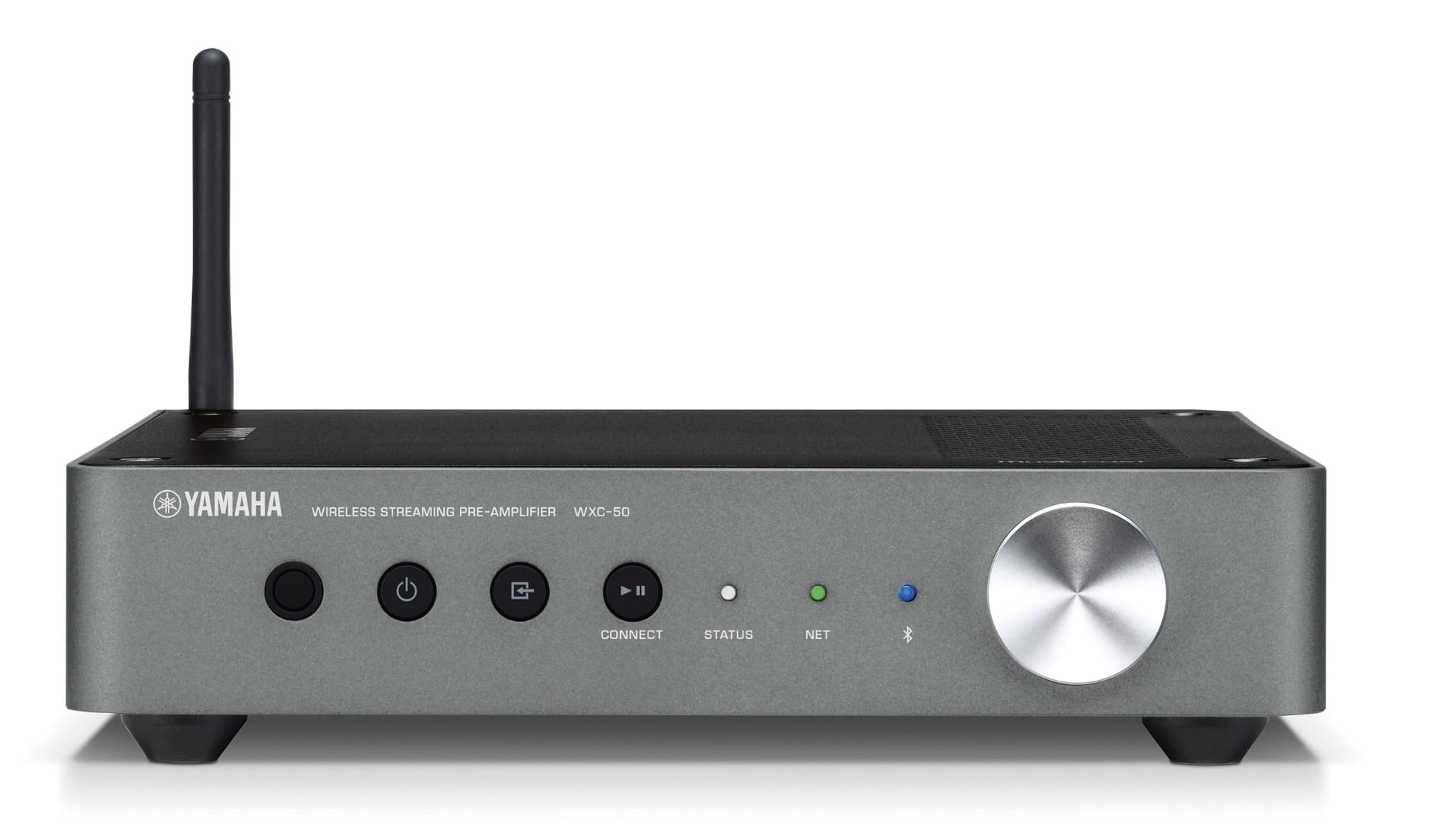


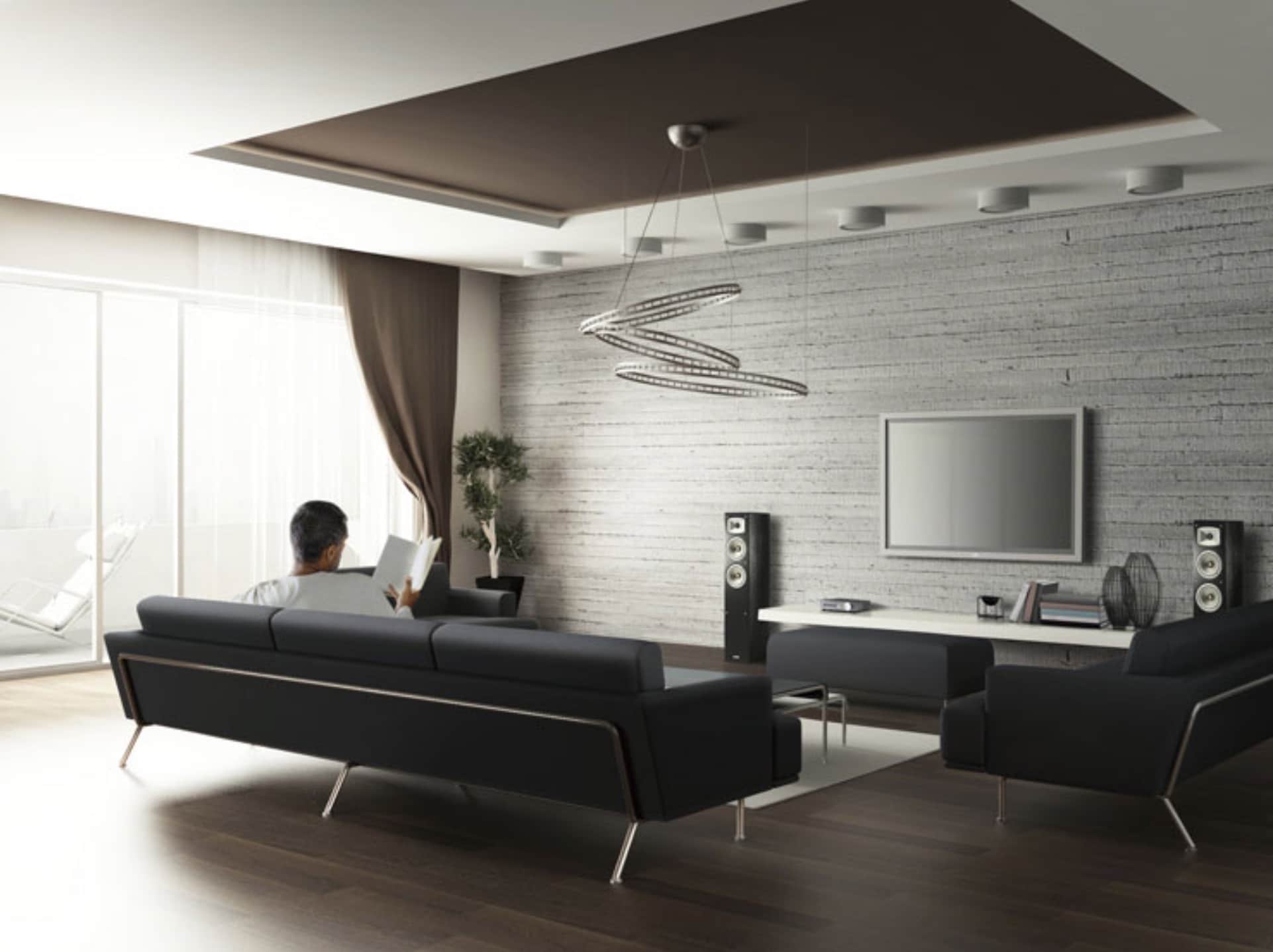
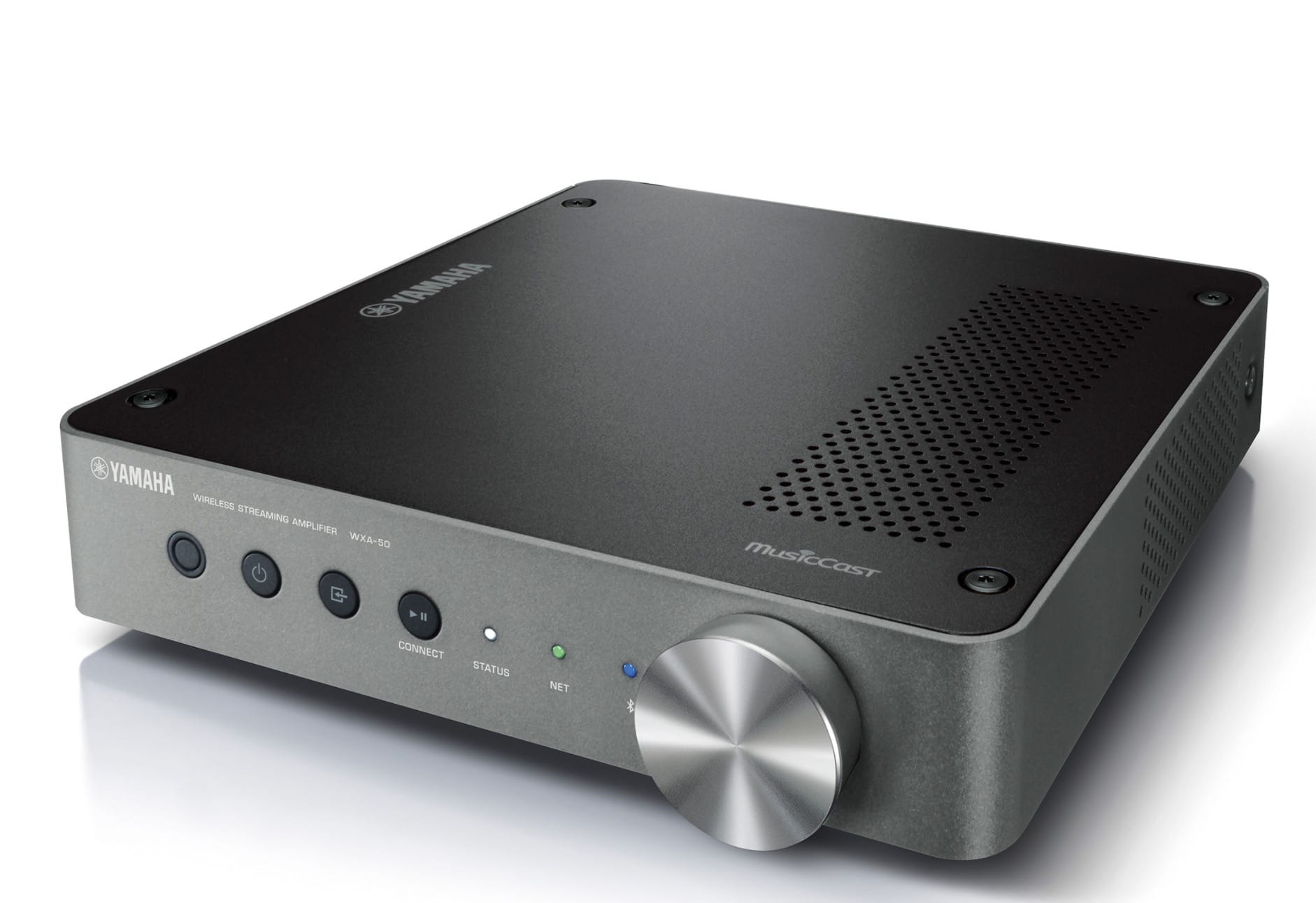
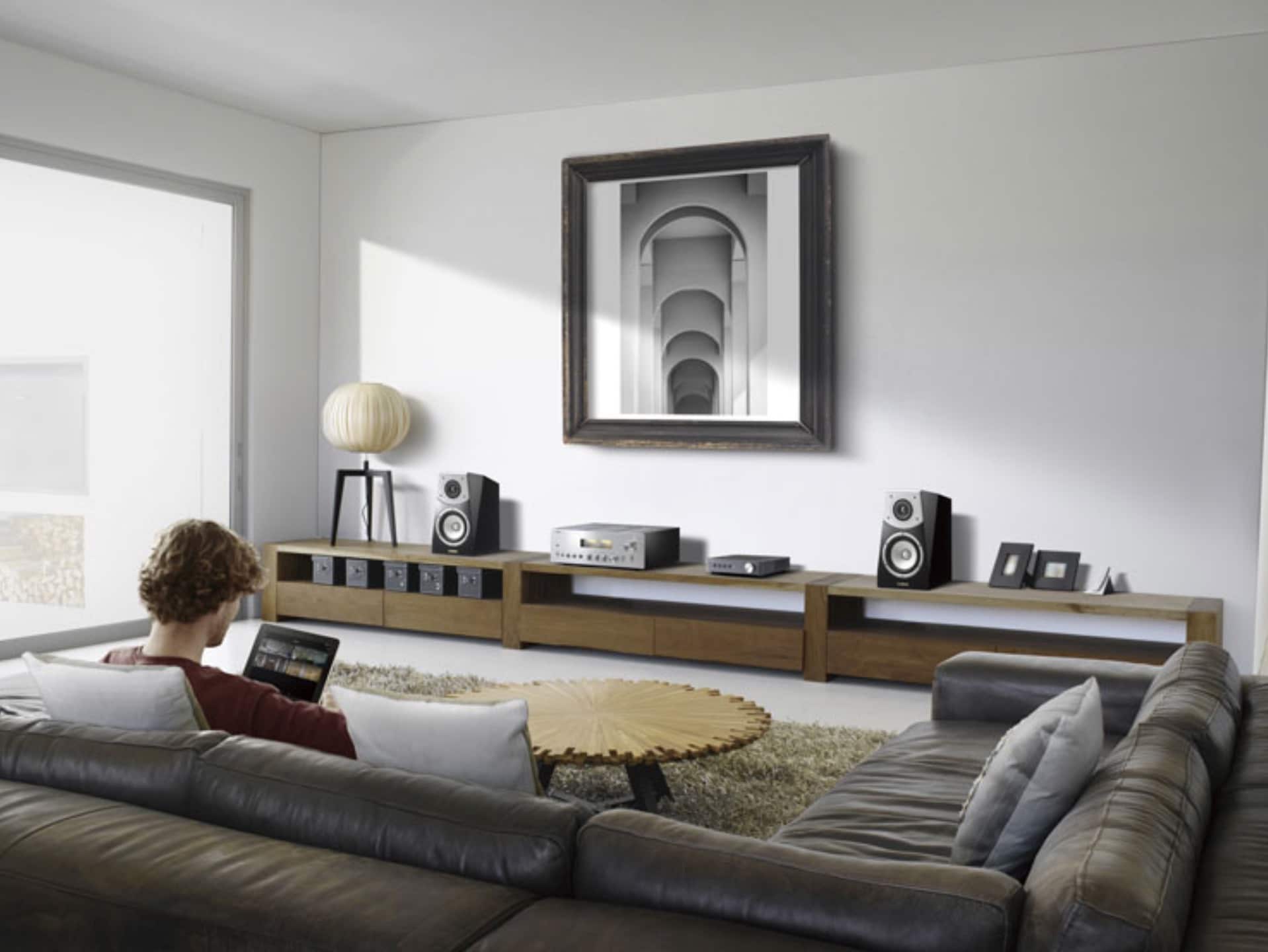


Hi, I was wondering if the Yamaha WXC-50 would work well with a Crown XLS 2502 power amplifier ?
I would use this combination to power a pair of Jamo Pro 400ex speakers.
Hi Darren – it should work although I’ve never tested it but I do wonder about the pairing. Do you already have this unit or are you looking to buy? If the latter, then the money could be better invested in improved hardware.
Hi Paul,
I currently own a wxa 50 and a pair of Q Acoustics 3020s but the sound isn’t quite satisfying to me. I wish the treble would be a bit clearer, right now it sounds a little restrained, as the vocals do too.
Can you recommend any particular speakers for max. 300€ per pair?
Thanks in advance!
Hi Jan – I would suggest that the issue is not with the speakers but the Yamaha. You can tweak it be adding improved cabling, isolation feet and quality shelving. That should clear the sound a bit but a proper ‘fix’ will be an upgrade methinks.
Hm, I just got the unit from my local dealer and could give it back and look for something else.
I also read your review for the R-N602 but you said it´s not that nice for digital input. I mostly use spotify and really like the Musiccast system. My limit is 600 €.
Do you have any suggestions?
The Yamaha is ideal for people whose priorities is not purely sound but for those who want a blend of digital facilities, Internet services, price and sound. It’s a great value box for all of those. It sounds to me that sound is a priority so I would look elsewhere. Can you list your entire hi-fi chain, what music you like, if sound is indeed your priority and I’ll have a think.
I only have the speakers and the amp. And thats what Im looking for. A simple solution which can play music wirelessly, can connect to a TV or a Bluray player via optical or hdmi input and can be controlled completely from my smartphone.
So basically the Yamaha does what I want it can play Spotify gapless. The NAD Amp 1 for example couldnt do that when I tested it.
Is sound quality my priority? If the amp has the featrures I mentioned, then yes. Id say its a tie between ease of use and sound quality.
I mainly listen to pop, alternaive rock, funk and sometimes electronic music.
Basically Im looking for an alternative which does the same things but sounds better than the WXA-50.
Thank you very much for your advice!
Hi Jan – ok, so you’re looking at a range of Internet services and digital services. At this budget, to access those features, you will be looking at a sonic compromise but, if you choose carefully, you can maximise what you have. I would suggest looking towards Onkyo on this one. Onkyo has always had decent amplifier modules within their AV equipment. Have a look online, Amazon perhaps at something like a Onkyo TX-NR696 or similar. This is a value for money product that offer a host of services but should improve sound quality.
Don’t ignore basic accessories here, though. Good cabling, isolation feet, shelving, etc will enhance sound quality and often remove midrange edge and treble ‘tizz’. By all means scour my Accessories reviews and give me a shout if you need further help on this.
Hey Paul,
some time has passed and I am still thinking about an upgrade.
I thought about buying a used amp (e.g. Marantz 6006 or Yamaha AS-501) and adding something like the Yamaha WXAD-10 or the Allo Boss Player. Do you think that would be a step up in terms of sound quality? Spotify is still my main source and I want to connect my TV to the amp.
Hi Jan – sorry, I’m lost 🙂 Do you mean is that list you gave me a step up from the WXC/WXA-50 or are you asking is the latter a step up from the list you gave me?
I want to know if the used amp plus external streamer will be better than my wxa 50 🙂
Gotcha – and yes.
Ok, can you recommend any particular amps with digital inputs? My budget is 400 € for a used unit.
Thank you for your advice!
Hi Jan – the SA3 might be worth a look https://theaudiophileman.com/sa3-integrated-amplifier-review-iotavx/
Hi Paul… I yust buy the WXC-50 PRE DAC second hand and I’d like to make you a question because I don’t know exactly how a DSP system works. I understand the DSP change many things on the digital signal but my question is… If i don’t need special effects or equalizer instruments,it’s recommendable to bypass the control or mantein always on? For ex,if I listen a flac file or a SA CD quality,the DSP it’s still necessary or it’s better to insert it just in case I am listening liquid music from sopotify or deezer where the quality it’s not so perfect and maybe a dsp process can help in some algorithmic? Thank you very much!
Marco.
My best advice for EQs and the like is to try it yourself and be guided by your own ears, Marco. Listen for a while with EQs ‘on’ then turn them ‘off’ and see what you think.
Hello Paul
I discovered your review recently and bravo these are great. Just bought a Yamaha wxc 50 to listen to tidal FLAC music and internet radios. It is connected on my Cambridge CXA 60 via the rca outpout in preamp mode and the amp is playing on B&W 606. Sound great. Best combination so far little better to my taste via the rca than via the optical outpout of the Yamaha. Still I have a question. The Cambridge does not have a pre-in rca so the Yamaha is connected to one of the analogic entry on the amp. Which preamp is used ? The Cambridge one or the Yamaha one ?
Thanks for the answer and take care !
Hi Roger, if you have an amp and then you plug something into the pre-amp sockets of that same amp, the bit that runs from that? You’re basically using that box’s power amp. If you’re using the Yamaha as a streamer, you just need to plug that into the Cambridge’s inputs. The pre-amp is only of use if you buy a cracking, specialist power amp. Then you plug that into the other box’s pre-amp sockets to take advantage of that superior power amp. As it is, the Cambridge should offer you everything you need in amp terms.
Hi Paul
There are no pre in sockets on the CAMBRIDGE-CXA60 so it is plugged on the CD socket but the Yamaha is set as preamp so I can control the volume through the application. It is working fine like this but my guess is that the Cambridge preamp is in use then ?
Hi Roger – plugging the Yamaha into A2-A4 in the Cambridge will be fine from the Yamaha’s Aux out sockets or from coax out on the Yamaha to coax in on the Cambridge. Volume is looked after by the Cambridge and any app you may be using. The streaming, etc, is handled by the Yamaha.
Hello
Played with jitter levels setting …
It do the job even if you listen to from usb flash connected directly to Yamaha.
So no any slow intrrnet connection between …
My impression what it really do, it works like DSP processing. It make low level signal louder. So, my results. Level 3 to avoid !!! The scene become compketly flat. I listen to Dire Straits and I see that the voice become big and fat and loose his place on the scene.
Breefly, the level 1 is the only that I would recommend to use.
Also, I ask me the question how does this jitter removing process will collaborate with the same process existing in my DAC (?) I connected yamaha only as the player because of internet services and usb flash possibility.
Thanks
Have a nice day
Thanks for that, Oleg – let us know how you get on with your further DAC tests.
Hey oleg thats interesting so far i only heard everyone including yamaha on using level 3 as beeing the best option. Have you done more testing with other recordings?
Hi Paul, great review I’m looking to replace/ upgrade my old Denon D F102, or possibly just add a WiFi streamer. As a replacements I’ve been looking at the Yamaha N670D, or the Denon CEOL N10, or Denon DRA 100, which would be your favourite, of the 3?
If I was to just add a streamer, in pure audio streaming quality is there any difference between the Yamaha WXC 50 and the WXAD10? The WXAD10 seems like an affordable add on to my
current old, but very likeable set up (any other suggestions at this price range?), assume any more money would be better spent on a completely new set up as mentioned above?
Cheers C
Hi Chris – of the three? The Yamaha. Also, adding a separate streamer is a ‘good thing’ because it separate the components and lowers high frequency noise.
Hi Paul, thanks lots for getting back to me. Just to clarify the three were the Yamaha N670D v Denon CEOL N10 v Denon DRA 100. Do you think there’s any better option under the £800 price point?
With regards to the Yamaha N670D, the system includes an amp unit and a CD/ streaming unit, are you saying that the already included cd/ streamer is good because it’s a separate unit, or are you suggesting adding an additional completely independent streamer?
Thanks again C
Hi Chris – of the three you listed, I’d choose the Yamaha in its overall performance terms. As a separate question, yes, I’d always go with a separate streamer, if you can. Again, as a separate question, can you purchase better quality for ¬£800? Yes. I’d look at a Bluesound 2i and a Cambridge AXA35. You’ll need to add to your budget for good quality cabling.